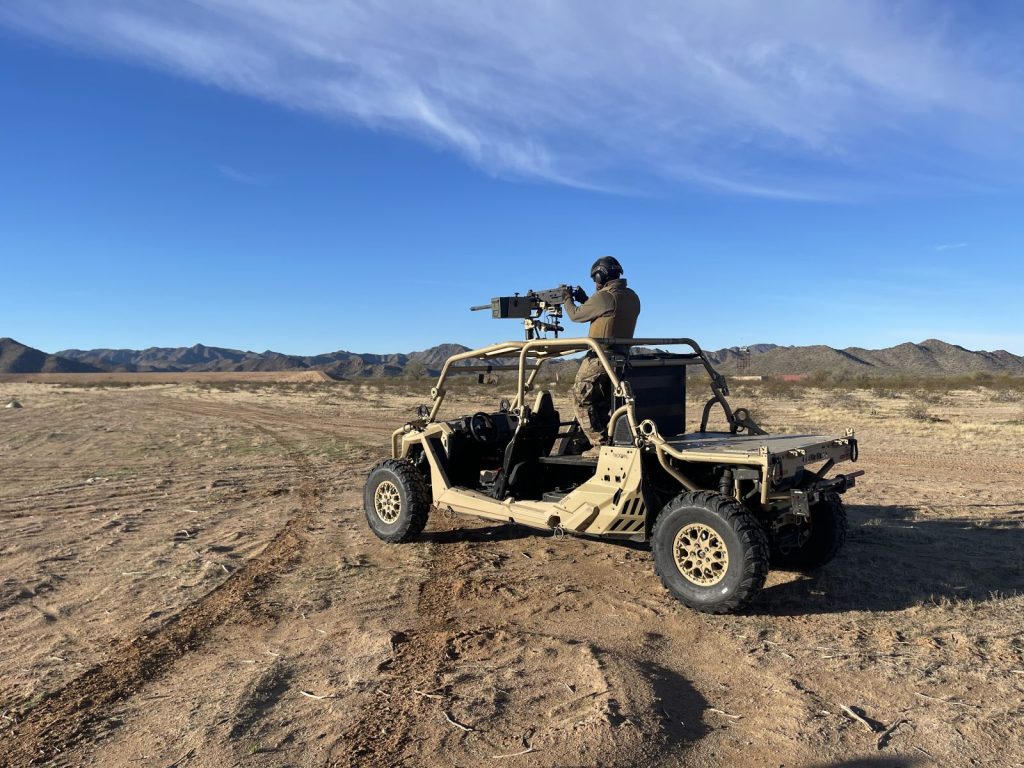by Canadian Army Today Staff
If you voiced an opinion about the Polaris MRZR-D light tactical vehicle that units across the Army have been trialing since 2018, there is a good chance your critique was heard.
If it submits a bid for the Army’s Light Forces Enhancement (LFE) project and the Light Tactical Vehicle (LTV) for the brigade in Latvia, Polaris Government & Defense could offer the MRZR Alpha — a direct decedent of the MRZR-D that features more than a dozen modifications based on feedback from Canadian troops, the U.S. Marine Corps, U.S. Special Operations Forces, and other allies.
“All of that input was taken and put into the design of the Alpha,” said company vice president Nick Francis.
“We often talk about the Alpha being designed for the next battlefield,” he said, and concerns raised by the light infantry battalions in Edmonton, Petawawa, and Valcartier about the MRZR-D’s ability to navigate mountainous or marshy terrain and extreme temperatures have been factored into the new Alpha.
The Army plans to procure up to 108 light tactical vehicles for the brigade in Latvia later this year, and up to 222 more under the LFE project within the next three years. And the MRZR-D has played a role informing the requirements for both projects.
The MRZR-D rolled off the Polaris production line in 2016 and the Army acquired 36 as part of a buy-and-try in 2017 and 2018 to evaluate how well an off-road platform could improve troop mobility.
For the Alpha, Polaris has retained the overall simplicity of the MRZR design and maintainability, but it has incorporated the feedback from Canadian and other soldiers to significantly improve the off-road performance, durability, payload capacity, and exportable power.
LFE project directors have repeatedly flagged the need for a more robust platform than the MRZR-D to meet Canada’s needs domestically and overseas. Not surprising, durability was “top of the list for Alpha and was our most critical design criteria in the development of the vehicle,” said Francis.
Polaris improved the engine and transmission as well as the chassis, achieving more than 8,000 mean miles between operational mission failure. It also improved the MRZR’s fuel efficiency to over 10 kilometres per litre and decreased the acoustic signature to make it harder to detect.
More important for troop and cargo movement, Polaris increased the payload capacity from 680 kgs to 1,000 kgs with more occupant space and a larger cargo bed, and introduced a ride height leveling suspension to maintain at least 30 centimetres of ground clearance, no matter the gross vehicle weight.
“Mobility [is] a key requirement for the next generation of LTV,” said Francis. “They have got to be great at obstacle crossing.”

As the Army’s global response task force, the light infantry battalions must be able to deploy rapidly, anywhere. The Alpha now weighs 1360 kilograms and can fit three across in a CC-177 Globemaster III, as well as in a range of tactical helicopters. It can also be loaded on a sling or air dropped.
“We’ve maintained transportability as a key design feature,” said Francis.
The Alpha can run with an open cab or fully enclosed, and now has a validated track system for a range of winter and Arctic operations. Polaris has also tuned the Alpha’s engine calibration to run in mountain terrain at elevation above 3,100 metres.
With greater demand by customers to support counter uncrewed aerial systems, sensors, and networked communications suites, Polaris has expanded the onboard real estate and upped the Alpha’s exportable power over the MRZR-D — Alpha variants will be available with an additional 1kw and 5kws of exportable power.
The improved modularity of the platform means “we can convert our personnel carrier into a cargo carrier and back again in just a matter of minutes,” said Francis, by removing or adding the rear two seats and cargo panels, making the transition to a medical evacuation or other specialized platform straightforward.
The Alpha features three weapon mount locations as well as a pintle on the roof for light and medium machine guns. But Polaris also took the experience of the 3rd Battalion, The Royal Canadian Regiment (3 RCR) into account. With the MRZR-D, 3 RCR struggled with the recoil of the .50 calibre gun during weapons trials in Petawawa.
On the Alpha, Polaris conducted its own .50 cal test on the new suspension. The platform can “handle the recoil and is really effective in placing multiple rounds on target,” said Francis. “We did some comparative testing of the Alpha compared to our Dagor, which is in service with Canadian Special Operations Forces, and the effectiveness of fire from the Alpha was just as good as it was on a larger vehicle like Dagor.”




